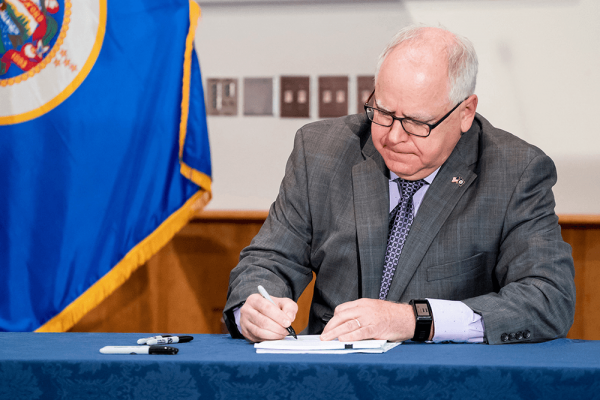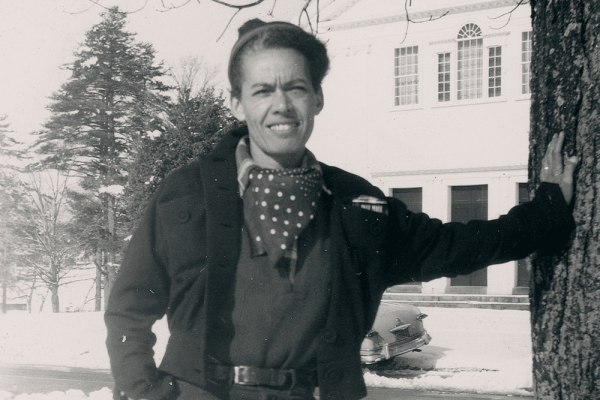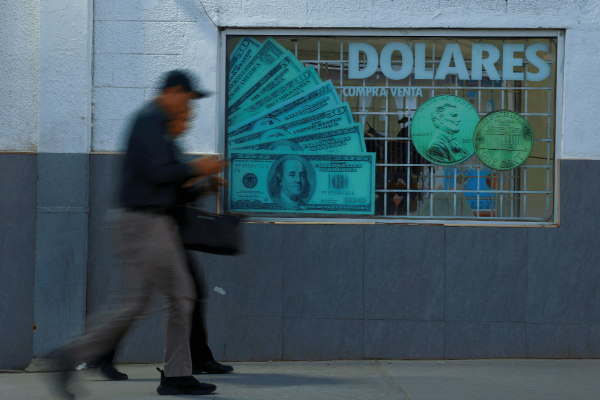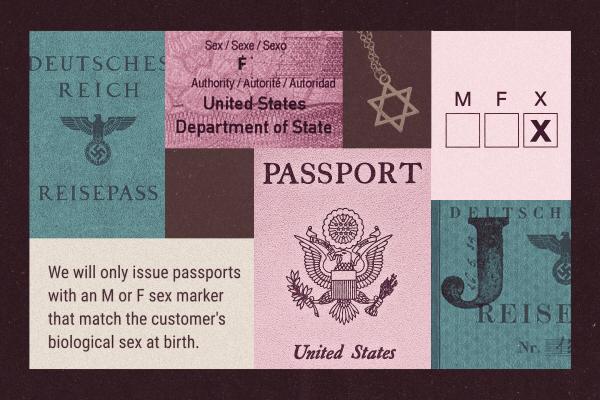As Vice President Kamala Harris and Minnesota Gov. Tim Walz continue to campaign across the country, pastors and organizers in Minnesota are reflecting on their work with the governor, saying that he has displayed an authentic willingness to collaborate with faith and community leaders over his tenure.
Billy Charvez Russell is the senior pastor of Greater Friendship Missionary Baptist Church, a historically Black church in Minneapolis. When Walz took office in 2019, Charvez Russell began working with Walz’s administration, joining a faith outreach group the governor’s administration operated. The following summer, when a Minneapolis police officer murdered George Floyd sparking nationwide racial justice protests, Charvez Russell said Walz was able to draw on his existing relationships with local faith communities to encourage Minnesotans to protest peacefully.
“They created spaces where we were able to share different concerns and things that were going on, on the ground,” Charvez Russell said. “We felt it was authentic and genuine. So, we already had a working relationship, and that's what put us in the best position when the crisis happened.”
The day following Floyd’s murder, a memorial was erected and peaceful protests began at the site of his death. Though protests were overwhelmingly peaceful, violent demonstrations and robberies spread to other areas of the city, mainly in the area of the police station. Nearly 150 buildings were set on fire and more than 1,500 businesses damaged in the first few days of protests. Restaurants and retail stores suffered the most vandalization.
Walz waited three days before deploying the National Guard to respond; some criticized him for deploying them at all, while others were upset he waited so long. When looting and curfew violations intensified, the Walz administration held a press conference where Christian, Muslim, and Jewish faith leaders encouraged the community to protest peacefully.
Charvez Russell was the first faith leader to speak, sharing his own experiences with racism as a native Mississippian and resident of Minnesota for 20 years. He encouraged the community to adhere to the 8 p.m. curfew so that they wouldn’t be confused with “those that are standing to tear down our government, and all of our institutions, and all of our neighborhoods.”
He told Sojourners that Walz personally called him after the rioting settled, thanking him for using his influence to calm the community. Charvez Russell said he understood Walz had to balance supporting the rights of protesters, allowing law enforcement to do their job, and holding the bad actors responsible. Though Charvez Russell errantly claimed it was outside agitators who were responsible for the burning of buildings and violent acts, not actual residents of the Twin Cities, a claim also made by Walz and his administration.
Though the governor’s office initially claimed that 80 percent of those being violent and destructive didn’t reside in the state, USA Today’s review of police records later confirmed that 93 of the 109 arrests that took place in Minneapolis between May 28 and May 30 were Minnesota residents.
In the months that followed, Pastor Doug Mork of Holy Trinity Lutheran Church and other labor justice advocates committed themselves to making sure that as the community rebuilt, businesses owned by Black, Indigenous, and other people of color remained.
“The most concrete work I've done with the governor's administration in these last three and a half years really has been around the rebuilding of Lake Street and other areas that were heavily damaged,” Mork said. “So, a rebuilding that really paid attention to [Black, Indigenous, and People of Color] ownership, that invested in BIPOC businesses, and that didn't allow this to be just another example of white developers with money being able to come in following a disaster and profit. My experience of the Walz administration has been highly supportive of that vision.”
Mork, who has a background in labor justice, became an associate pastor at the church just 21 days before police murdered Floyd. The church, which is just two miles away from George Floyd Square, a long history of racial justice work and had spent several years auditing how their largely white church benefited from white privilege in institutional structures. But protests came to the church’s backyard when protesters burned down Minneapolis’s third precinct police station—right around the corner from the church.
The precinct fire, he said, was the “center of the rising anger and justifiable response” to the murder, in contrast with George Floyd Square, which he saw as a “center for vigil and prayer.”
When a nearby respite center was also burned down, the church opened its doors two straight days and nights to allow first aid to take place. The church was focused on the local day-to-day operations and helping protect the neighborhood from white supremacist activity that was occurring during the racial justice protests.
Mork said the issues in communities of color that remained after Floyd’s murder didn’t come out of thin air. He said there is a long, documentable history of underinvestment, redlining, and other capital strategies that disadvantage these communities. Though he and other advocates were hoping for even more money, he said the Walz administration did move a lot of money in the aftermath for them to invest in repairing the area.
In February 2021, Walz proposed a $518 million infrastructure investment, with $150 million being allocated for the rebuilding of Minneapolis and St. Paul. Mork and the other advocates were hoping for $100 million just for Lake Street. The final bill that passed allocated $80 million and was dispersed more broadly for community repairs.
Mork says Walz didn’t engage their congregation specifically during the protests but instead points to organizations like Faith in Minnesota that work more closely with the legislature.
Faith in Minnesota is a 501(c)4 social welfare organization that grew out of ISAIAH, a multi-racial, non-partisan coalition of faith leaders in the state. Minister JaNaé Bates, co-executive director of Faith in Minnesota, said that the Minneapolis Police Department has a long history of “heinous” crimes against people, particularly Black people.
“The world getting to witness the murder of George Floyd was far more than a straw that broke the camel's back,” Bates said. After the murder, one of the primary concerns was then-Hennepin County Attorney, Michael Freeman. Black community leaders did not trust Freeman to act justly in prosecuting Floyd’s murderer.
“There was a loud outcry to have Attorney General Keith Ellison take over and Gov. Walz was very swift to respond to that,” Bates told Sojourners. Walz announced that Ellison would take the case less than a week after Floyd’s death. “I think that that's indicative of how he tends to think about his own role here, and his ability to shift and move based on where the community is.”
And Bates says the organization’s relationship with Walz far precedes 2020. He was a major champion of the group’s advocacy for paid family medical leave and childcare work. Even after protests died down, he continued to support the reform Faith in Minnesota and many members of the community wanted.
Walz called a special session just two weeks after Floyd’s murder which Bates said was a really important response to the community’s pain. During the session, the legislature passed the Minnesota Police Accountability Act, which Walz signed into law on July 23, 2020. Bates said one of the policies in the law was crucial — had it existed when Philando Castile was killed in 2016, she doesn’t believe his killer wouldn’t have been able to get off.
Both Bates and Charvez Russell expressed their excitement when they found out Walz had been selected as Harris’ running mate.
“I didn’t anticipate he was going to be the choice, because he’s just a regular guy,” Charvez Russell said. “To think of someone like that being at the top of our government is what we all hope for.”
Got something to say about what you're reading? We value your feedback!







